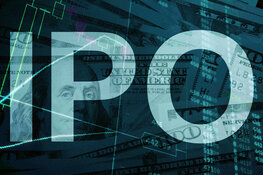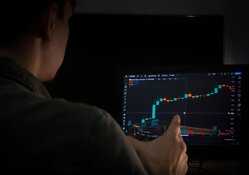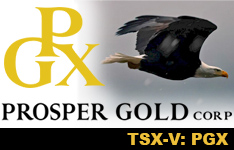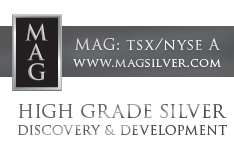The U.S. defense sector continued to evolve in 2025, supported by record-level government budgets, growing private investment, and a renewed focus on technological agility. Geopolitical instability, including escalating tensions between global powers, catalyzed rising demand for advanced defense systems. At the same time, drone technologies and early-stage defense innovation played an increasingly central role in reshaping the sector’s operational priorities.
In July, Defense Secretary Pete Hegseth announced a major overhaul of policies affecting drone production. In a July 10 memorandum, Hegseth rescinded restrictions that he said were “hindering drone production” and cited the urgent need for mass deployment of low-cost, American-made unmanned aerial systems. “Drones are the biggest battlefield innovation in a generation,” he wrote, adding that the U.S. must scale up production to match the volume of drones being produced by adversaries.
At a Pentagon showcase held on July 16, 18 American-made drone prototypes were displayed, highlighting a significant reduction in development timelines. According to Emil Michael, undersecretary of defense for research and engineering, these prototypes advanced from concept to field-ready in an average of 18 months, compared to the traditional six-year cycle. Michael stated the department intended to continue innovating in areas such as cost, resilience, firepower, and range, with assistance from private capital and artificial intelligence developers.
Support for this shift extended to the executive level. President Donald J. Trump signed a June 6 executive order aimed at reducing regulatory uncertainty and streamlining certification processes. The order also called for coordination between the Department of Defense and the Federal Aviation Administration to improve airspace access for drone training.
Drones Take on New Roles in Emergency Response
Alongside policy reform, market demand for drones in emergency response surged. According to a July 30 commentary from FN Media Group, the emergency responder drone market was valued at US$5.68 billion in 2023 and was projected to grow to US$12.5 billion by 2032. A report from Market Research Future highlighted the expanding role of drones in public safety, citing improvements in imaging, payload capacity, and battery life. “These trends reflect a broader move toward adopting aerial technologies as essential tools in enhancing public safety and emergency management strategies globally,” the firm stated.
Government initiatives were described as key drivers behind the market’s growth. The report noted that funding, regulatory support, and collaborative efforts between tech developers and first responders were helping to normalize drone integration. “Such governmental backing not only legitimizes the role of drones in emergency response but also assures potential investors about the market's sustainability and growth prospects,” according to Market Research Future.
Broader investment in the defense innovation space gained momentum. Bloomberg reported on a new venture capital effort from Point72 Asset Management. The firm, led by billionaire Steve Cohen, began raising US$400 million for the Deterrence Fund, targeting early-stage investments in defense, energy, and security. According to investor documents cited in the report, Point72 planned to invest between US$1 million and US$30 million per startup and emphasized the need for nimble technologies capable of modernizing defense infrastructure. “The opportunity in defense tech investing isn’t just bigger than it was in 2023 — it’s more urgent,” Point72 wrote in a blog post. The firm argued that autonomy, AI, and software-first systems would redefine future conflict.
These developments followed a wider structural shift across the sector. In an August 2 report for AI Invest, analyst Oliver Blake described the industry as entering a “new era of opportunity” driven by AI, hypersonic technology, and space-based surveillance. He noted that global defense spending had risen to US$2.72 trillion in 2024, marking the largest year-over-year increase since the Cold War. In the U.S. alone, military spending reached US$997 billion, bolstered by policies from both the Trump and Biden administrations.
While concerns about valuation persisted, citing a forward price-to-earnings ratio of 27.18X and a PEG ratio of 2.55X, Blake indicated the sector remained resilient due to stable budgets and technological advancement. Defense exchange-traded funds (ETFs) had outperformed the broader S&P 500 index by margins ranging from 23.5% to 57.3%, underscoring investor confidence in long-term growth potential.
The shift toward advanced drone capabilities, increased venture funding for early-stage defense technologies, and coordinated regulatory efforts all pointed to a sector adapting quickly to new security demands. According to industry sources, these developments reflected both the urgency of modern conflict and the opportunity for structural transformation across the U.S. defense landscape.
As government backing, technological advancement, and private capital converge, several companies have emerged at the forefront of the evolving defense and drone landscape. These firms are contributing to a range of mission-critical applications, from emergency response and disaster relief to cutting-edge AI-driven surveillance and communications infrastructure. Their recent developments reflect both the sector’s shifting priorities and its continued momentum.
Unusual Machines Inc. (UMAC:NYSEAMERICAN)
Unusual Machines Inc. (UMAC:NYSEAMERICAN) is a Florida-based drone component manufacturer specializing in first-person view (FPV) systems for commercial and defense applications. The company targets a key position in the unmanned aerial vehicle (UAV) supply chain by providing NDAA-compliant components used in low-cost, remote-piloted drones.
 Streetwise Ownership Overview*
Streetwise Ownership Overview*
Unusual Machines Inc. (UMAC:NYSEAMERICAN)
In July, Unusual Machines announced that its Fat Shark Video Transmitter (VTX) was approved by the Defense Innovation Unit for inclusion in the Blue UAS Framework, a designation that confirms cybersecurity compliance for Department of Defense use. The VTX is the latest in a growing list of UMAC’s core FPV components to meet the standards of this federal procurement program.
UMAC has continued to build production capacity with a new 17,000-square-foot motor manufacturing facility in Orlando, scheduled to open in September. It also acquired Australian drone motor maker Rotor Lab for US$7 million, expanding its global supply chain and aligning with demand for domestically sourced alternatives to foreign-made systems.
Litchfield Hills Research analyst Barry Sine compared UMAC’s business model to “Intel Inside,” noting that the company supplies approximately US$300 worth of components for a US$500 drone. He issued a Buy rating and a US$20 price target, citing the firm’s position in a fast-growing, policy-driven sector.
As for ownership,
About 11.1% of the company is owned by management and insiders, UMAC said. The rest, 88.9%, is retail.
Unusual Machines has 24 millions shares outstanding as of June 30, 2025. Its market cap is US$288.03 million. Its 52-week high and low share prices are US$23.62 and US$1.28 per share, respectively.
DroneShield Ltd. (DRO:ASX; DRSHF:OTC)
DroneShield Ltd. (DRO:ASX; DRSHF:OTC) is an Australia-based defense technology company specializing in counter-unmanned aerial systems (CUAS). With a presence in over 40 countries and nearly 4,000 units deployed, the company focuses on protecting military and critical infrastructure from the growing threat of drone-based attacks through its proprietary hardware and AI-powered detection platforms.
 Streetwise Ownership Overview*
Streetwise Ownership Overview*
DroneShield Ltd. (DRO:ASX; DRSHF:OTC)
In July 2025, DroneShield announced its participation in Project FlyTrap, a multinational defense exercise led by the U.S. Army V Corps. Held across Germany and Poland, the initiative aims to advance CUAS capabilities among NATO allies. DroneShield’s technology is being integrated and tested at the Joint Multinational Readiness Center in Hohenfels, Germany, alongside U.S. and U.K. forces. “CUAS is no longer optional. It’s essential,” said Vice President Tom Branstetter, noting the significance of exercises like Project FlyTrap in validating defense solutions before battlefield deployment.
DroneShield’s inclusion in the exercise coincided with strong financial results and increased analyst support. On July 30, Bell Potter upgraded the stock to a Buy following a record Q2 revenue of AU$18.2 million and free cash flow of AU$9.3 million. Shaw and Partners also reaffirmed a Buy rating, citing global expansion plans and the company’s proprietary AI suite as key differentiators. According to Shaw’s analyst Abraham Akra, DroneShield was “well-positioned to benefit from the increasing demand for integrated CUAS solutions.”
The company reported US$72.3 million in half-year revenue for HY2025, more than triple the same period in 2024, with a year-to-date secured revenue total of US$176.3 million. Its current sales pipeline stands at US$2.33 billion, backed by ongoing R&D investments exceeding US$50 million annually. As DroneShield continues to scale operations and broaden its international footprint, its involvement in high-profile defense collaborations reinforces its position as a leading provider in the CUAS market.
Recent filings reveal that Vanguard Group has become a substantial shareholder in DroneShield, holding a 5.47% stake. Regal Funds Management holds approximately 9.5%, while JP Morgan Chase owns 6.34%.
These holdings add to the company's strategic investors, which currently control over 11% of DroneShield's stock. Management and insiders hold 5.68%, according to the most recent company presentation.
DroneShield has 872.12 million outstanding shares and 782.40 million free float traded shares. Its market cap is approximately AU$2 billion, and its sales pipeline has grown to AU$2.3 billion. The company’s 52-week share price range is AU$0.5850 to 2.72.
Red Cat Holdings Inc. (RCAT:NASDAQ)
Red Cat Holdings Inc. (RCAT:NASDAQ) is a U.S.-based provider of interoperable unmanned systems for air, land, and sea. In a strategic expansion, the company recently entered the maritime autonomy market with the launch of a new line of unmanned surface vessels (USVs), designed to complement its existing suite of drone technologies. These USVs are combat-tested, with over 10,000 hours of operational experience, and can operate autonomously or alongside manned systems.
Red Cat plans to begin production of its seven-meter Expeditionary Multi-Role Craft in Q3, tailored for long-range, high-speed missions with heavy payload capacity. These platforms are expected to support coastal interdiction, anti-ship operations, and deep-strike missions, aligning with growing U.S. defense priorities in maritime environments.
On May 15, analyst Michael Latimore of Northland Capital reaffirmed an Outperform rating and US$13 price target, citing the company’s integration of proven AI and software systems through strategic partnerships. He also noted Red Cat’s bids on large-scale defense contracts. The company recently expanded its reach through integration with Ocean Power Technologies’ WAM-V and PowerBuoy platforms, enhancing the capabilities of its Teal-2 drones across multi-domain operations.
Red Cat’s market capitalization stands at approximately US$745 million, with 90.92 million shares outstanding and 77.01 million in float. As of mid-July 2025, retail investors held 67% of shares, while institutions held 19% and insiders, including CEO Jeff Thompson, held about 14%.
| Want to be the first to know about interesting Technology investment ideas? Sign up to receive the FREE Streetwise Reports' newsletter. | Subscribe |
Important Disclosures:
- Unusual Machines is a billboard sponsor of Streetwise Reports and pays SWR a monthly sponsorship fee between US$4,000 and US$5,000.
- As of the date of this article, officers and/or employees of Streetwise Reports LLC (including members of their household) own securities of Unusual Machines, DroneShield, and Red Cat Holdings.
- James Guttman wrote this article for Streetwise Reports LLC and provides services to Streetwise Reports as an employee.
- This article does not constitute investment advice and is not a solicitation for any investment. Streetwise Reports does not render general or specific investment advice and the information on Streetwise Reports should not be considered a recommendation to buy or sell any security. Each reader is encouraged to consult with his or her personal financial adviser and perform their own comprehensive investment research. By opening this page, each reader accepts and agrees to Streetwise Reports' terms of use and full legal disclaimer. Streetwise Reports does not endorse or recommend the business, products, services or securities of any company.
For additional disclosures, please click here.








































